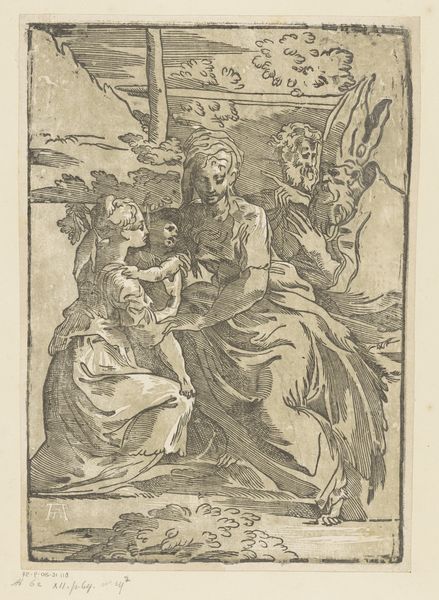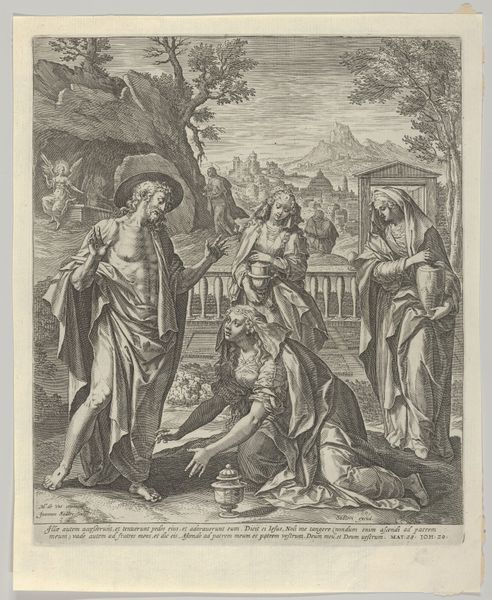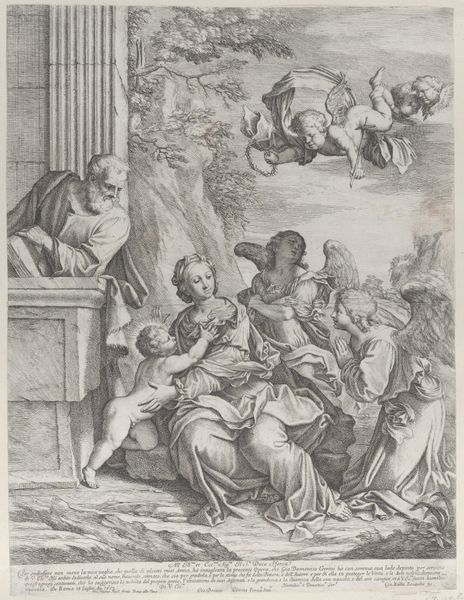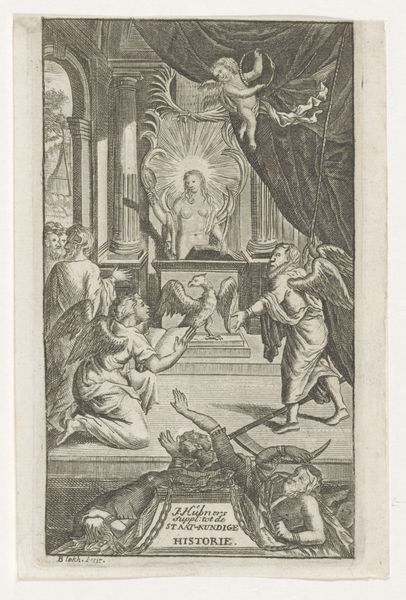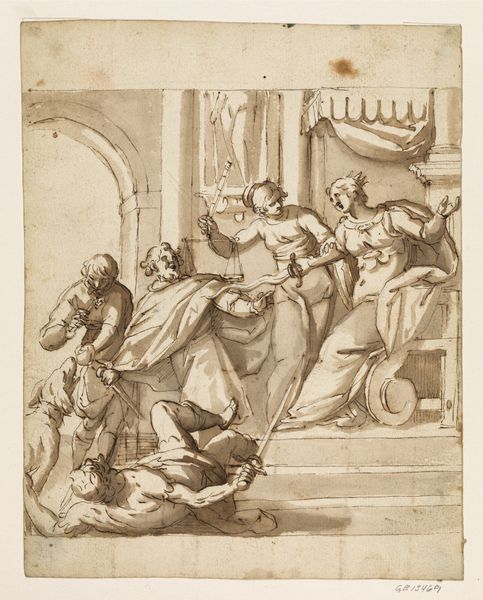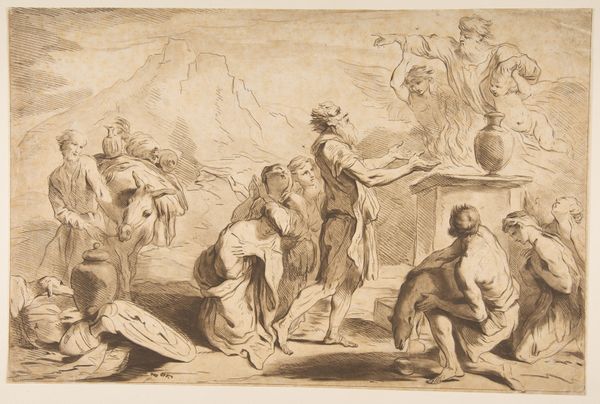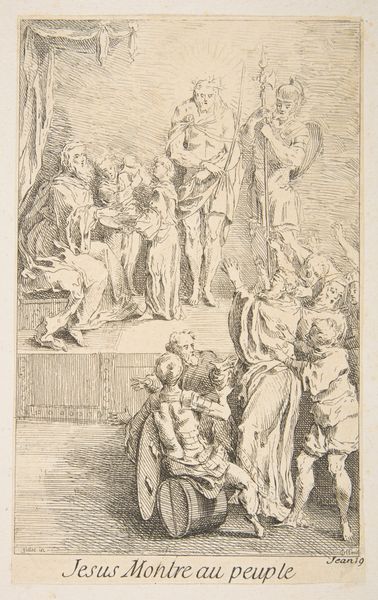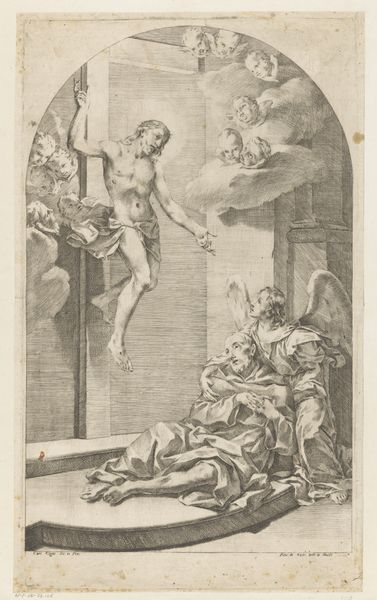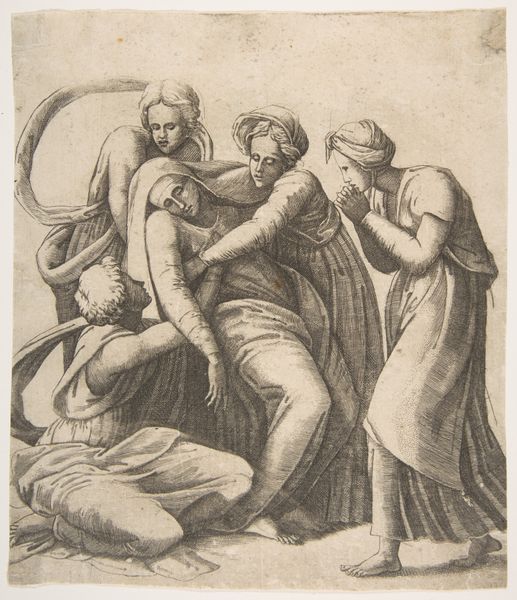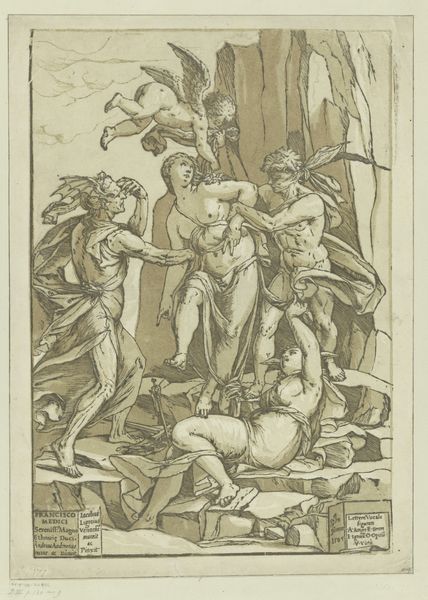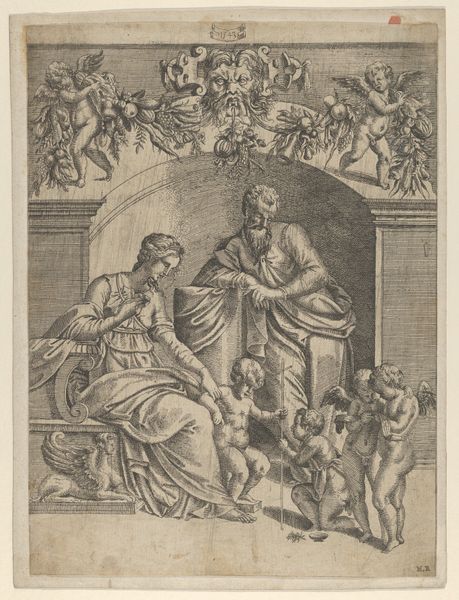
drawing, paper, ink
#
drawing
#
figuration
#
paper
#
ink
#
italian-renaissance
Dimensions: height 401 mm, width 302 mm
Copyright: Rijks Museum: Open Domain
Curator: Here we have "Maria met Kind, Sebastiaan en een bisschop" created around 1605 by Ugo da Carpi, executed with ink on paper. It immediately evokes a kind of serene drama for me. The grey washes create a sense of both lightness and solemnity. Editor: I’m struck by the use of what seems to be chiaroscuro—that stark contrast of light and dark—to define the figures. Look at how the bishop's robes, rendered with swift strokes of ink, create volume and almost mimic draped textiles. What's the significance of the figures, particularly within its period? Curator: The work represents a confluence of religious and civic identity. We see Mary with Child, traditional symbols of maternal divinity, juxtaposed with Saint Sebastian, who embodies resilience in the face of suffering. This configuration was often commissioned to invoke divine protection against plague or war, anxieties very present in that era. Then, including the Bishop is fascinating, because it places those religious figures into local politics. Editor: Exactly. And consider the material reality—ink on paper. It suggests relative affordability and portability. Prints would have been more accessible and were reproduced and disseminated widely to spread the religious doctrine. This ties into the growing power of merchant classes that would invest into mass manufacture, even of artwork. The craft lies in the design. Curator: I agree, the accessibility of prints opened avenues for religious narratives to reach wider audiences. But it also empowered those same audiences to question the representations. This speaks to emerging notions of individual piety and a challenge to centralized religious authority. Is the intent to convey a message of authority or humility through materials? Editor: That's a sharp point. Da Carpi's choice highlights a tension inherent in the art market of that time, the desire to spread a certain dogma while profiting off of an art object itself. You know, despite the sombre tones, I see glimmers of optimism here, a sense of resilience conveyed through skillful design and choice of materiality, not just content. Curator: Ultimately, examining it reminds us that this seemingly simple drawing reflects layers of complex religious, social, and political dynamics shaping early modern Europe.
Comments
No comments
Be the first to comment and join the conversation on the ultimate creative platform.
